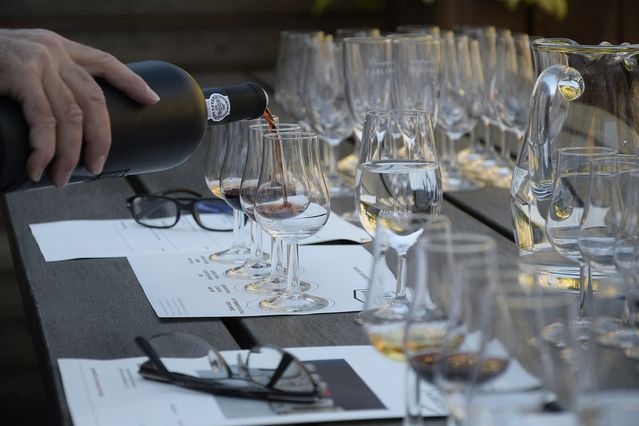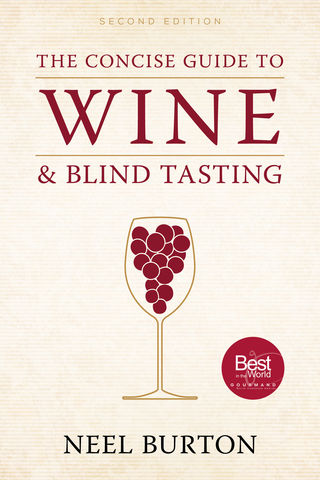Scent
The Perception of Wine
The physiology and psychology of wine tasting, and why blinding is so important.
Posted February 21, 2014

Our sense of taste arises from specialized sensory cells in taste buds on the tongue, palate, soft palate, and in the throat. There are around 5,000 taste buds in the mouth, each with 50-100 sensory cells or chemoreceptors. These sensory cells are responsive to one of five groups of chemicals, with each chemical within a group interpreted as one of the five fundamental tastes: alkaloids as bitterness, sugars as sweetness, ionic salts as saltiness, acids as sourness, and amino acids as umami or savouriness. Although some parts of the tongue are more sensitive to certain tastes than others, the ‘tongue map’ that divides the tongue into discrete tasting areas very much overstates the case. Chemical sense of taste is supported by the physical and chemical sensation of the liquid in the mouth. The physical sense of touch, which is responsive to dissolved particles as small as three microns, transmits the temperature and texture (or ‘mouthfeel’) of the wine. The prickle of dissolved carbon dioxide is transmitted by chemesthesis, the same sense or sensibility by which chemical irritants such as chilli or mustard register their fieriness.
Sense of smell, or olfaction, is triggered by airborne chemicals acting on receptor cells in the olfactory bulb behind the nose. There are ~500 types of olfactory receptor which, through a form of combinatorial processing, are capable of discerning several thousand aromas. Sensitivity to aromas can differ significantly, both from one aroma to another and from one individual to the next. Indeed, some aromas are detectable in concentrations 100 million times smaller than others! Receptor cells in the olfactory bulb may be triggered orthonasally, through the nostrils, or retronasally, from within the mouth. Much ‘tasting’ actually takes place retronasally, which explains why a runny or blocked nose can leave our food tasting of cardboard.
The ‘flavour’ of a wine is an integrated interpretation by the brain of all the various sensory stimuli detailed above. Upon tasting the wine, the brain experiences something of a sensory overload, whence the frequent difficulty in pinpointing individual flavours and aromas. To make its job easier, the brain relies heavily on preconceptions, context, and memory to inform its interpretation of the sensory stimuli. For example, if a white wine with an aroma of lemons and apples is dyed red with food colourings, most people will describe red berry aromas; and if a table wine is served in a bottle labelled ‘Grand Cru’, most people will describe it as ‘complex’, ‘balanced’, and such-like. The olfactory bulb is part of the limbic system, an area of the brain closely associated with emotions and memories. Thus, smells and tastes can trigger strong emotions and vivid memories that colour the brain’s interpretation of those smells and tastes and thereby ‘bias’ our perception of the wine. Similarly, our emotional state affects our appreciation of sensory stimuli, which explains, for example, why wine tastes better in good company. Fortunately blind tasting can help us overcome these biases, first, by removing a certain number of their sources, and, second, by encouraging us to hyper-focus on sensory stimuli, tease them apart, and assess and evaluate them.
In engaging intellectually with a wine, blind tasters activate not only their limbic system, but also parts of the brain responsible for cognition, which is a conscious, higher-order function. This process can be assisted and developed by writing tasting notes that seek to accurately describe the sensations produced by the wine. Given the limitations of language in accurately describing our sensations, this is no mean feat. Nonetheless, language is by far the best tool at our disposal for communicating our experiences to others and, indeed, to ourselves. The act of consciously describing the sensations produced by the wine alters the makeup of our brain, forging neural connections that, over time, affirm, develop, and refine our ability to taste and think about taste. As Wittgenstein famously remarked, ‘the limits of my language are the limits of my world.’
Although some people do have a higher density of taste buds, this does not make them ‘super tasters’. Tasting is not so much a function of the hardware (the nose and palate) as it is of the software (the mind or brain). Indeed, regardless of the sensitivity of their tasting apparatus, untutored tasters find it difficult to ‘get their head round’ more complex wines, and, as a result, derive greater enjoyment from simpler, more accessible wines. To them, it can seem as though the more experienced tasters are talking mumbo jumbo. But with enough experience and training, almost anyone can turn into a wine expert.
Neel Burton is author of the Concise Guide to Wine and Blind Tasting.
Find Neel on Twitter and Facebook



